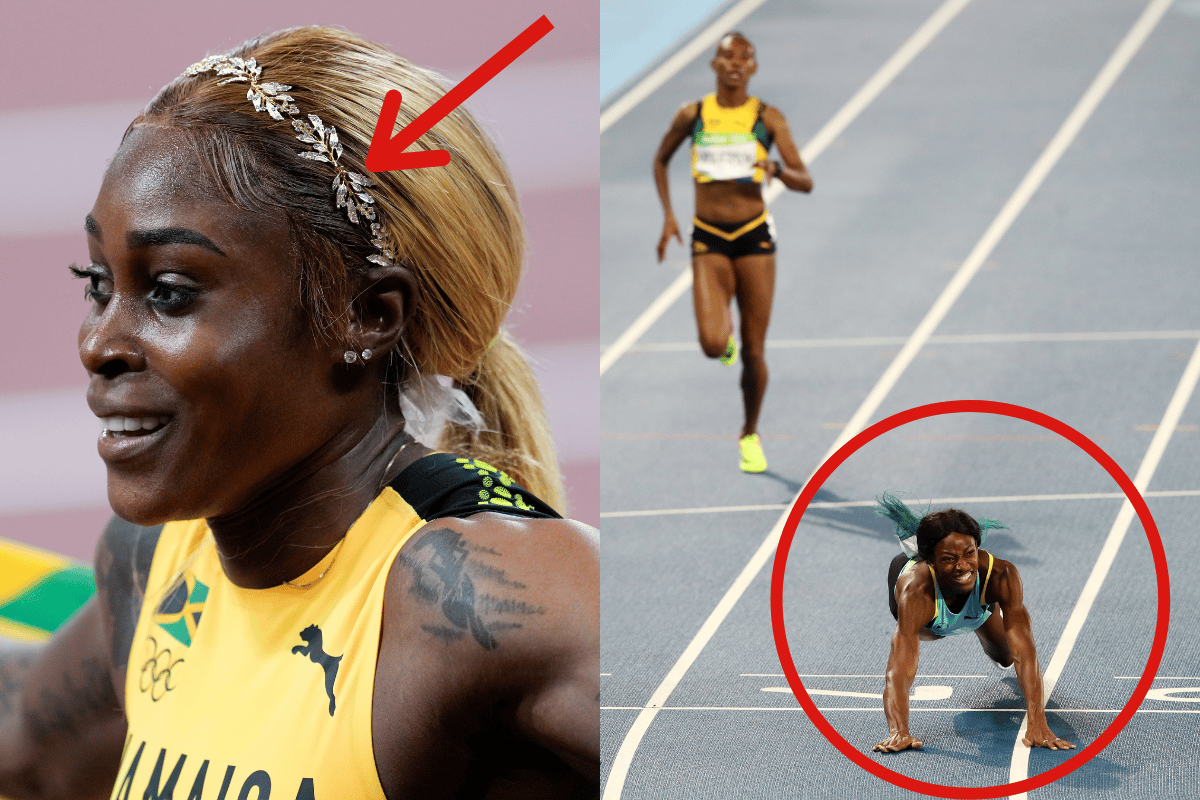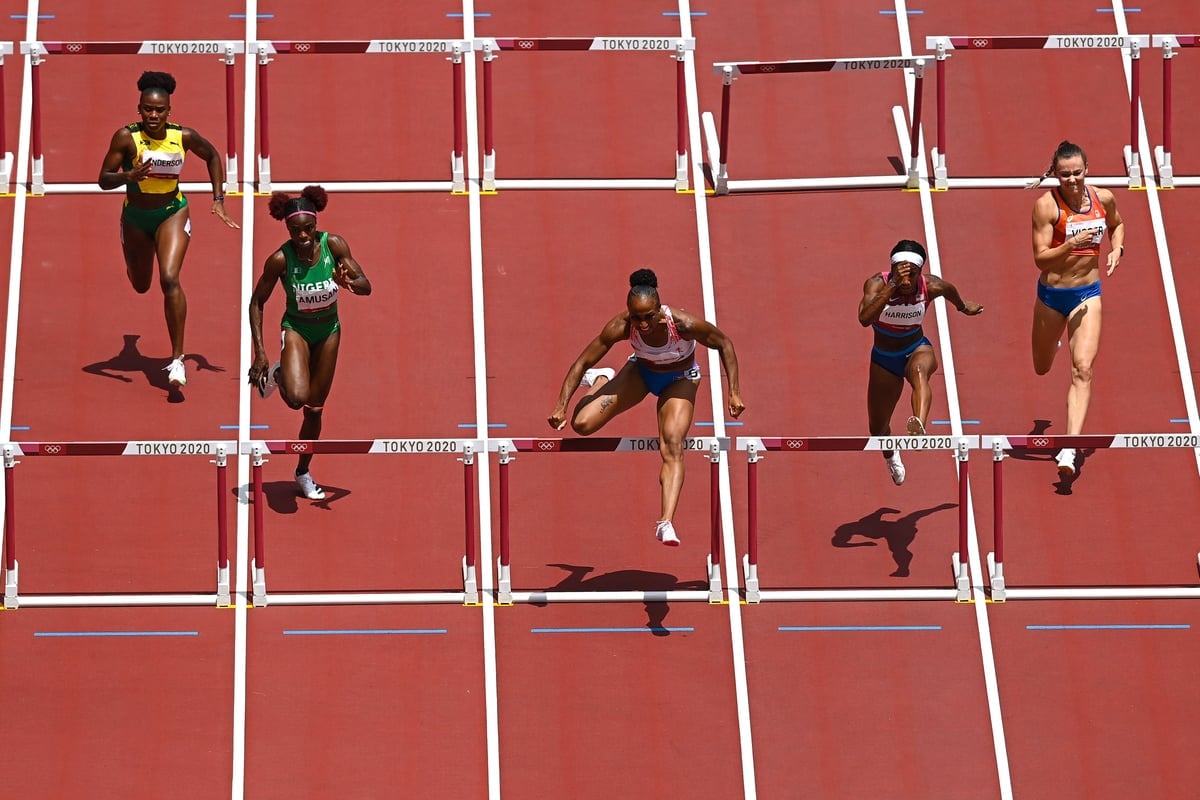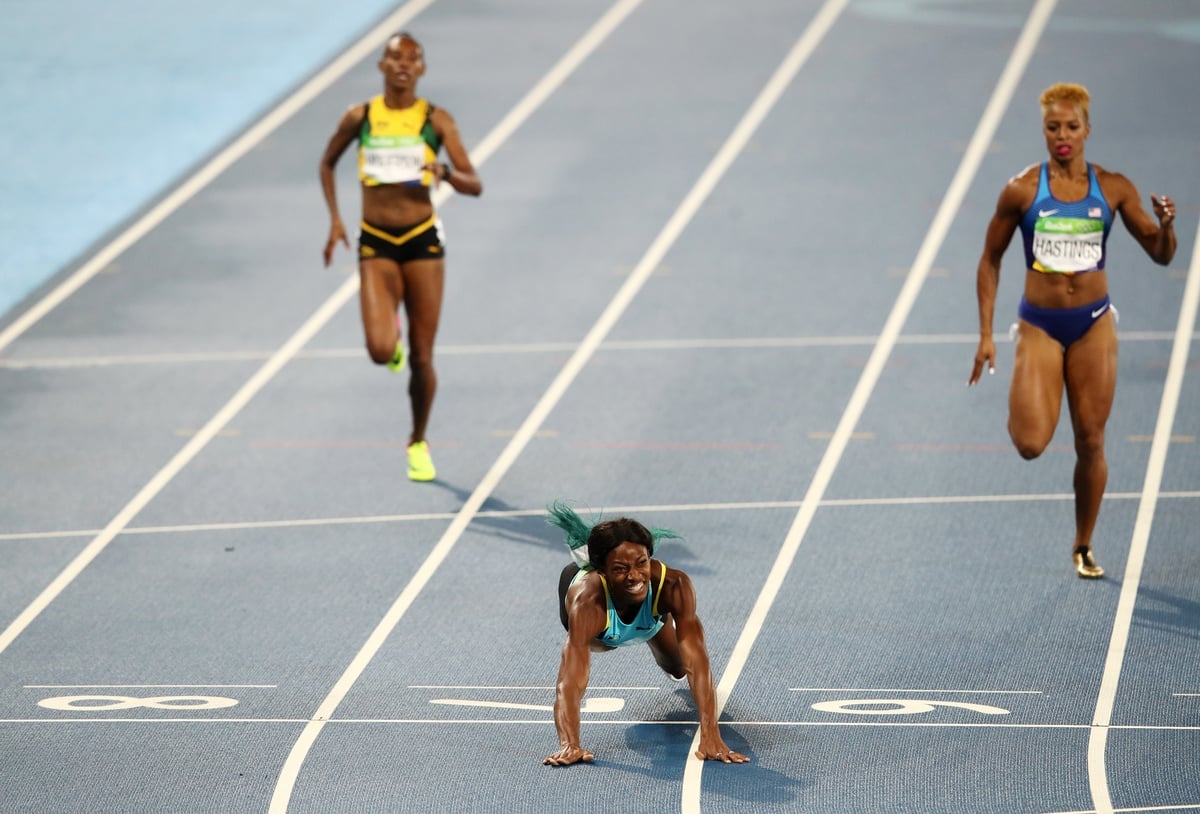
The Olympics are providing a much-needed distraction from everything going on right now. And we've very much here for it.
Last week, we watched Aussie swimmers (particularity the women) win medal after medal in the swimming pool and now we're watching our best athletes battle it out in track and field.
Listen to this episode of Mamamia Out Loud, where Holly, Mia and Jessie recap of some of the weirder side of the Olympic games. Post continues after podcast.
But as some of the early athletics events get underway, we've started to ask ourselves some questions.
Like what happens when an athlete knocks over a hurdle? And doesn't wearing jewellery during the 100m sprint slow you down??
Instead of pondering them to ourselves for the next week, we decided to answer them for you.
Here are six things you've probably always wondered about athletics.
1. What's the go with false starts?
False starts are a big no-no at the Olympics.
Under the current rules, if an athlete jumps the guns and false starts they are automatically disqualified. There are no second chances.
But this didn't always used to be the case.
Before 2010, a false start would simply result in a warning for the entire field. Then, if a second false start occurred, the athlete who jumped the gun would be disqualified.
This was a little problematic because it meant that one athlete could false start and everyone would receive a warning. But a second and completely different athlete who false started would instantly be disqualified.




